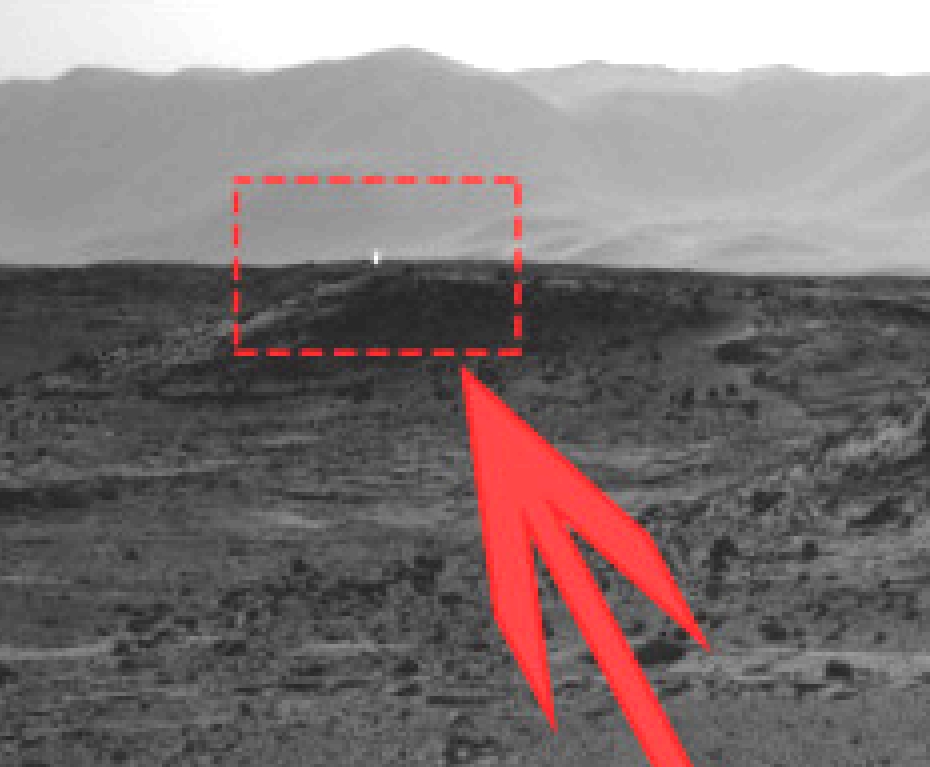We are surrounded by hype. Marketers have always hyped their products, but the "hyping disease" has been caught by television news directors, web bloggers, newspapers and magazines. This web page was inspired by my annoyance with the growing problem of over-hyped science reporting. I blame the internet, partly, because it shortens the "news cycle" and rewards quick and sloppy reporting. Because of my experience with the Comet ISON fiasco (briefly described near the bottom of this web page), I am familiar with how easily an honest report of something scientific can be distorted and hyped for selling purposes by freelance writers simply trying to earn a living. It is unhelpful when a news organization buys the "story" without fact-checking, and reports it as true. My plan is to add an item to this web page several times per week. Occasionally I'll describe an article that deserves plaudits.
News Stories Needing Un-Hyping (or Plaudits)
2014.04.09. Today
there are articles about a light on the
horizon of a Mars Curiosity image (e.g., link).
One blogger (UFO
Daily Sightings) suggested
that it's evidence for intelligent (Martian)
life living below the ground. Baloney! As
every amateur astronomer who uses scientific
grade CCD cameras knows cosmic ray hits to
the CCD silicon surface produce tiny white
spots in images at random times and random
locations. I deal with them on a daily
basis. These are routinely edited out before
presentation anywhere. Why didn't the JPL
person edit out this cosmic ray artifact?
Could be that he was playing a joke on the
gullible public, and had a bet with a
colleague about there being someone
sufficiently lacking in ethics to hype the
Martian life theory. As the JPL contact
noted, other images taken seconds later
don't show this artifact. Don't believe
anything you read (even this web page).

2014.02.18. Here's
an old un-hype complaint that helped
motivate me to start this web site: Asteroid
"2000 MN26" is over-publicized, in my
opinion. No one knows where it's located in
the sky at any given time during its close
passage past Earth because it hasn't been
observed in 14 years, and then for only a
short span of 14 days. I was going to try to
observe it ("recover" it, actually) but I
noticed that the JPL and MPC ephemerides for
it (for tonight, for example, February 18,
UT) differ by 6 degrees, and the
uncertainties in position for each is of the
order 25 to 50 degrees. In other words, we
really don't know where to look for it until
it's recovered by a large field-of-view
asteroid survey camera system. I'm puzzled
why the SLOOH people publicized their
attempted streaming video coverage of it.
The upcoming live streaming video was
promoted on the NBC Nightly News as well as
on many web news sites. The SLOOH people are
smart, so they had to have known that none
of their observers would be able to recover
it in "real time." I'm left with the
suspicion that they couldn't pass up the
opportunity for getting publicity. I watched
the 1-hour streaming broadcast, and it was
lame: all
they did is talk about
how important SLOOH is,
and related programs. This
is the kind of hype that annoys me!
What
Prompted me to Create This Web Site?
My awareness of the problem was
dramatically illustrated by flawed reporting of my Comet ISON
observations following my recovery image on August 12, 2013.
An amateur beating NASA to obtain a recovery image of this
so-called "Comet of the Century" caused some to ask why, given
NASA's budget. But when I showed that the comet was much
fainter than NASA models had predicted, additional questions
arose about the possibility that NASA was hyping the comet for
their own purposes. I defended NASA, but had to also
acknowledge that NASA could have done a better job of
discouraging reporters from hyping the comet. Months after
Comet ISON broke apart and reporting on it abruptly stopped, I
continued to see over-hyped news stories. Near-Earth objects,
NEOs, seemed to be getting undue attention and misleading news
reports. For example, last February the national TV news
reported on a NEO whose close passage to Earth could be seen
on streaming video. I knew that this NEO wouldn't be seen,
streaming or any other way, because its orbit wasn't known
well enough for anyone to know where to their telescope. It
annoyed me that the streaming video astronomers had to have
known this also, but they persisted in promoting their
upcoming program. I wanted to warn people to not bother
watching, but I had no way to do this. With this web page I
hope to provide some overdue feedback on science stories that
are too fantastic to be true, because their not.